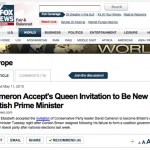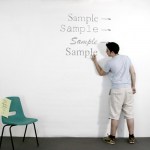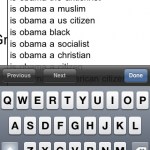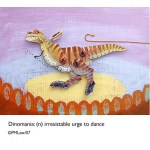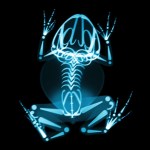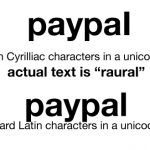words
A study recently published in the Proceedings of the National Academy of Sciences provides evidence that pigeons can learn to recognize words. That is after the birds were trained over a period of 8 months. According to the study authors "The pigeons’ performance is actually more comparable to that of literate humans than baboons’ performance."
To read, we must be about to decode letters and the sounds they make as well as orthographic knowledge to recognize words by sight. Although our lineages split over 300 million years ago, pigeons (like humans and baboons) possess…
The most beautiful experience we can have is the mysterious. It is the fundamental emotion which stands at the cradle of true art and true science. Whoever does not know it can no longer wonder, no longer marvel, is as good as dead, and his eyes are dimmed.
Albert Einstein
Ideas and Opinions, New York: Crown, 1954.
(quoted in Lawrence Weschler's Mr. Wilson's Cabinet of Wonder: Pronged Ants, Horned Humans, Mice on Toast, and Other Marvels of Jurassic Technology, New York: Random House, 1995.)
Adam Winnik sent me this animation inspired by Carl Sagan's famous "pale blue dot" monologue. It's true to the serious implications of Sagan's words, yet wry and lighthearted (mostly). A lovely example of remix culture revitalizing a classic of biology.
Adam gives some background:
I've been enrolled in illustration at Sheridan College for the the last 4 years and this is my final thesis project. I have always thought of Carl Sagan's writings as "scientific poetry" since they lack the cold touch that science is often cursed for having. I think Sagan's words resonate more than ever, and will…

When I was about eleven years old, I loved to draw intricate ornamental initials with sea serpents twining all over them and castles sprouting out of them, etc. Sometimes my friends would have me draw ink letter "tattoos" on them, but really, the only way I could get satisfactory resolution on my letters was to use a fine tip pen on a full sheet of paper. One letter = math class. (No wonder I don't know calculus).
That's why this new group show at San Francisco's Gallery Hijinks has me smiling with nostalgia - it's a full alphabet (plus) of letter-themed artworks. The organic,…
How often people speak of art and science as though they were two entirely different things, with no interconnection. An artist is emotional, they think, and uses only his intuition; he sees all at once and has no need of reason. A scientist is cold, they think, and uses only his reason; he argues carefully step by step, and needs no imagination. That is all wrong. The true artist is quite rational as well as imaginative and knows what he is doing; if he does not, his art suffers. The true scientist is quite imaginative as well as rational, and sometimes leaps to solutions where reason can…
Because people have been discussing Google ngrams a lot, and because there are always major caveats to new datamining methodologies, I have to link Natalie Binder's excellent series of posts urging caution, not only about the methodology, but about assuming too much about ngrams' utility in social research.
Binder says,
The value of the Ngrams Viewer rests on a bold conceit: that the number of times a word is used at certain periods of time has some kind of relationship to the culture of the time. For example, the fact that the word "slavery" peaks around 1860 suggests that people in 1860…
detail of "Williamsburg Bridge Plaza," Brooklyn, NY, circa 1906
Source: Shorpy
I'm just saying, I don't think that's a speck on the negative. But maybe I'm too cynical.
Fox News is taking quality to a whole new level this afternoon. (I know, I know, it's my fault for accidentally clicking on their site. I deserve what I get.)
Regardless, congrats to the new Queen Minister!
You may have heard from Slashdot that the University of Wisconsin is switching from Arial, a sans-serif font, to Century Gothic, a serif** font that uses 30% less ink, for default printing. The university hopes to save ink, which is both thrifty and eco-friendly. But you may not have seen this art project by Matt Robinson and Tom Wrigglesworth: they used ballpoint pens to scribble large-scale test versions of various fonts on a wall, and the ink level afterward was an analog readout for which font uses more ink. Ingenious!
Word to the nitpicky: while there's no rule that a sans-serif font…
Alan Jacobs finds a quote that beautifully expresses why I don't want a Kindle, and why I wish the iPad were a stylus-friendly Mac tablet:
Of course, you can't take your pen to the screen. When it comes to annotating the written word, nothing yet created for the screen compares to the immediacy and simplicity of a pen on paper. The only effective way to respond to text on screen is to write about it. The keyboard stands in for the pen; but it demands more than a mere underline or asterisk in the margin. It demands that you write.
That, of course, was the reason for the pen all along: it's a…
A little Sunday reading: "Mr. Penumbra's Twenty-Four-Hour Book Store," one of several wonderful short stories by San Francisco writer Robin Sloan. It's sort of like magical realism for techies:
Back at Supply and Demand. The air is crackÂling with wi-ââfi; Kat and I are havÂing the only spoÂken conÂverÂsaÂtion in the entire place.She's wearÂing the same red-ââand-ââyellow "BAM!" t-ââshirt as yesÂterÂday, which means a) she slept in it, b) she owns sevÂeral idenÂtiÂcal t-ââshirts, or c) she's a carÂtoon character--all of which are appealÂing alternatives.
I don't want to come out and conÂfess…
When Google started "suggesting" the most popular search phrases below its query box, I was creeped out. Especially when I saw what it suggests for "is Obama". Yes, I was happier when I didn't know what other people were typing into Google.
However, the folks at HINT.fm took the opposite approach: they created an interface that invites you to explore the most popular search phrases for any given starting words. I took it for a spin to see what the American public is asking about you-know-who: scientists. (You totally thought I was going to say Palin, didn't you?)
click image for a larger…
Polly Law's Word Project is a series of mixed-media illustrations representing obscure words like dasypygal and nidifice. Though Law has exhibited her work in galleries, she hasn't found a backer to publish them as a book. . . yet. So she's seeking help at the entrepreneurial startup Kickstarter.com:
The Word Project book will be a soft cover, 10"x10". Each piece will get its own spread accompanied by its meaning, pronunciation & an example of use. Since 2002 I have been raiding the attics, basements and dusty cupboards of the English language in search of intriguing, odd & obscure…
Delicious - and suprisingly convincing - x-ray images of animals with "skeletons" made of typography by Katerina Orlikova. Be sure to check out _Motion Picture, a running cat-like creature reminiscent of Eadweard James Muybridge's vintage motion photography.
Via Street Anatomy.
For the annals of humorous translation mistakes, this package from a digital antenna we bought last fall promises to . . . do something. I'm not sure what.
For John O, who enjoys terrible advertising.
In the New York Times today there is an interesting article about Helene Hegemann whose debut novel, "Axolotl Roadkill," drew wide praise. You know this story: turns out that the book contains plagiarized passages (plagiarism: check, sales rising: check.) What I find fascinating about the story, however, is not this rehash of a tried and true marketing tactic, but Ms. Hegemann's defense of herself, summarized in this quote:
"There's no such thing as originality anyway, just authenticity," said Ms. Hegemann in a statement released by her publisher after the scandal broke.
Why do I love this…
Another one from Michael, who spotted an article about one of my favorite mathematical words to use in everyday speech (much the chagrin of non-scientists) used in the Supereme Court of the United States:
Supreme Court justices deal in words, and they are always on the lookout for new ones.
University of Michigan law professor Richard D. Friedman discovered that Monday when he answered a question from Justice Anthony M. Kennedy, but added that it was "entirely orthogonal" to the argument he was making in Briscoe v. Virginia.
Friedman attempted to move on, but Chief Justice John G. Roberts Jr…
According to Christina Warren at mashable.com, the switch to allowing non-Latin alphabet characters in web domains could give scammers a brand new toolkit. That's because browsers can't render many non-Latin characters, and the approximations may be doppelgangers for trusted sites. Alternatively, an address in an alphabet like Cyrillic, which shares certain letterforms with the Latin alphabet, can appear indistinguishable from pre-existing Latin-alphabet addresses:
Uh-oh.
It's only fair that users of different alphabets get to register their own addresses, but clearly there needs to be some…
For the bibliophile who can't bear to leave all his or her books at home: a one-of-a-kind necklace of eleven miniature leather-bound books by TheBlackSpotBooks. Via NotCot.
An excellent post from language log:
I propose a voluntary ban on the use of generic plurals to express statistical differences, especially in talking to the general public about scientific results in areas with public policy implications.In other words, when we're looking at some property P of two groups X and Y, and a study shows that the distribution of P in X is different from the distribution of P in Y to an extent that is unlikely to be entirely the result of chance, we should avoid explaining this to the general public by saying "X's have more P than Y's", or "X and Y differ in P", or…

